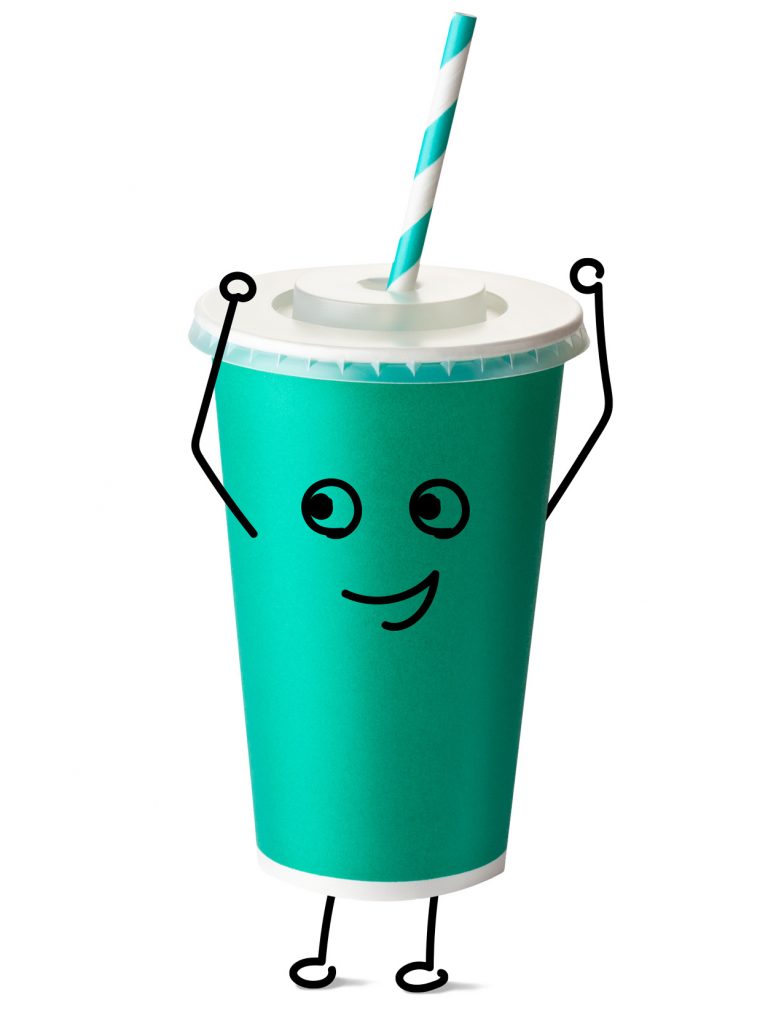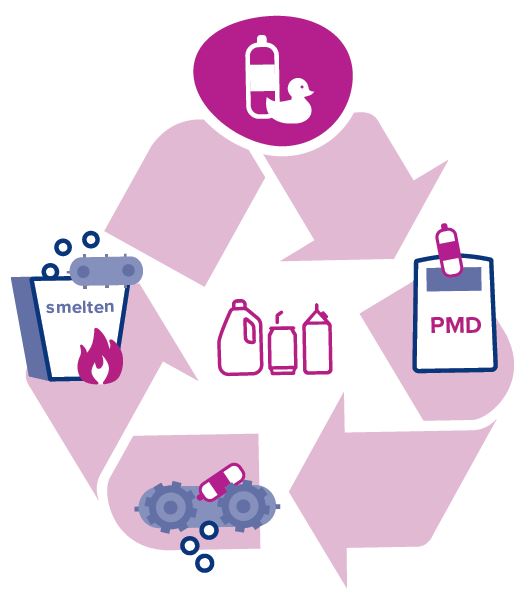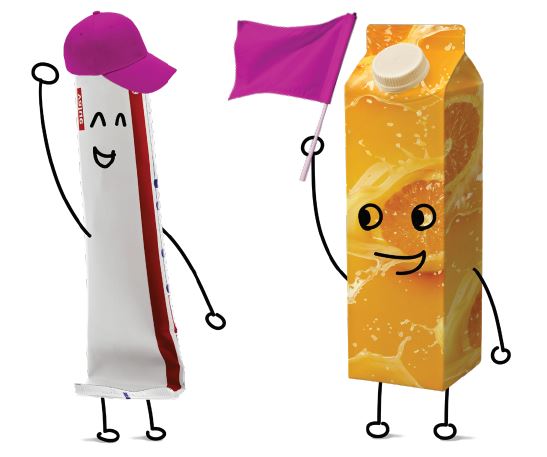The abbreviation PMD stands for empty Plastic packaging, Metal packaging and Drinking cartons. From your empty shampoo bottle to the plastic bag around your vegetables and from empty bags of chips to empty cartons of dairy and fruit juices: all of this can go in the PMD container. Almost all packaging from the supermarket not made of cardboard or glass belongs to the PMD container.
Recycling is only possible if the PMD is properly separated. And sometimes it is quite difficult to know whether something belongs in the PMD container or not. Do you want a visual reminder for your home? Then make a printout of this handy PMD flyer (only in Dutch). Are you in doubt? Check the waste separation guide (only in Dutch) or throw it in with the residual waste.
Plastic packaging
- Bottles for milk and vinegar
- Squeeze bottles for sauces and oil
- Bottles for detergents, shampoo and soap
- Packaging for cheese, meat and fish
- Pots for yogurt, custard and ice cream
- Trays for salad, vegetables and fruit (no polysterene)
- Bags for pasta, rice and bread
- Plastic around vegetables, rolls of toilet paper, boxes of tea, flowers, etc. (also: cellophane)
- Tubs for butter, sauce and cheese spread
- Plastic bags and packages
- Plastic with a layer of aluminum stuck to it (chip bags, coffee packs, blister packs of pills or chewing gum)
- Empty chemical packaging such as an empty turpentine bottle or empty drain unblocker
Tip: empty your packaging as much as possible before throwing it away. Just down to the last drop. Half-full packaging ensures that processing goes wrong (source: Milieu Centraal)
Metal packaging
- Cans for soup, sauce and vegetables
- Aluminum foil and trays
- Steel syrup bottles
- Beer caps
- Tea light cups
Tip: Aerosols of whipped cream and deodorant are not allowed in the bag or container for PMD because of the propellants that may still be in them. Throw away those aerosol cans residual waste (source: Milieu Centraal)
Drink cartons
- Fruit juice
- Water
- Dairy
- Wine
- Soup
- Pasta sauce
The packaging is sorted at our final processor and converted into raw materials that we can use for new packaging. The more packaging material that ends up in this container, the better!

Why only packaging?
Not all types of plastic and metal belong in the PMD container. A clothes hanger or clothes rack is made of metal, but it’s not packaging. Plastic pools, garden chairs and agricultural plastic are examples of large plastic objects that you can take to the recycling centre to be recycled. The sorting factory is specifically equipped to sort out packaging. Would you like to see how PMD waste is processed? Watch the video of our final processor here.
Should PMD waste be put in a transparent bag or normal bag?
PMD should ideally be put in a transparent waste bag. This is so we can see any polluting substances that might be in there. During processing, all bags are cut open so that the contents can be sorted. Our loaders and raw material coaches can often tell just by the weight of the full waste bag whether it contains properly sorted PMD.

New life for your old shampoo bottle
After collection, PMD waste is separated into seven types of plastic, paper and metal. A bale of packaging might contain plastics of all colours, for example, but to make white, blue or transparent plastic, you would need to separate the colours out. If you didn’t do that, you would only end up with black or grey plastic. That is why packaging is sorted by colour. The packaging is then chopped into pieces and washed, a process which also removes all leftovers still attached to it. It then goes on to another factory where the packaging is converted into ‘granulate’ or plastic granules that you can melt down to make new products, such as new packaging, waste bins, garbage bags, jerry cans and toilet brushes. Or they can transform your old shampoo bottle into a new one!

A sustainable cycle
Do you ever think about the number of packages you open every day? The production and transport of all this packaging uses raw materials and energy, which in turn has an impact on the environment. It would therefore be good for you to be more aware of packaging materials yourself. Bringing your own shopping bags to the supermarket and collecting fruit and vegetables in reusable cotton nets are just two examples that would save using unnecessary packaging.
